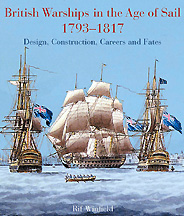
A frigate is a type of warship. In different eras, the roles and capabilities of ships classified as frigates have varied somewhat.
Captain is a rank or title for commander of a military unit, commander of a ship or other vessel, or leader of a unit or organization.

In the 18th century and most of the 19th, a sloop-of-war in the Royal Navy was a warship with a single gun deck that carried up to eighteen guns. The rating system covered all vessels with 20 guns and above; thus, the term sloop-of-war encompassed all the unrated combat vessels, including the very small gun-brigs and cutters. In technical terms, even the more specialised bomb vessels and fireships were classed as sloops-of-war, and in practice these were employed in the sloop role when not carrying out their specialised functions.

Steam frigates and the smaller steam corvettes, steam sloops, steam gunboats and steam schooners, were steam-powered warships that were not meant to stand in the line of battle. There were some exceptions like for example the French Napoléon class steam ship of the line was meant to stand in the line of battle, making it the world's first steam battleship. The first such ships were paddle steamers. Later on the invention of screw propulsion enabled construction of steam-powered versions of the traditional ships of the line, frigates, corvettes, sloops and gunboats.

The first USS Essex of the United States Navy was a 36-gun or 32-gun sailing frigate that participated in the Quasi-War with France, the First Barbary War, and in the War of 1812. The British captured her in 1814 and she then served as HMS Essex until sold at public auction on 6 June 1837.

In the rating system of the Royal Navy used to categorise sailing warships, a sixth-rate was the designation for small warships mounting between 20 and 28 carriage-mounted guns on a single deck, sometimes with smaller guns on the upper works and sometimes without. It thus encompassed ships with up to 30 guns in all. In the first half of the 18th century the main battery guns were 6-pounders, but by mid-century these were supplanted by 9-pounders. 28-gun sixth rates were classed as frigates, those smaller as 'post ships', indicating that they were still commanded by a full ('post') captain, as opposed to sloops of 18 guns and less under commanders.
Hydra generally refers to:
President most commonly refers to:

HMS Cerberus was a 28 gun sixth-rate frigate of the Royal Navy.

HMS Dacres (K472) was a Captain-class frigate, built in the United States as a Evarts-class destroyer escort, and transferred to the Royal Navy under the terms of Lend-Lease, which served in World War II.

British Warships in the Age of Sail is a series of four books by maritime historian Rif Winfield comprising a historical reference work providing details of all recorded ships that served or were intended to serve in the (British) Royal Navy from 1603 to 1863. Similar volumes dealing with other navies during the Age of Sail have followed from the same publisher.

Post ship was a designation used in the Royal Navy during the second half of the 18th century and the Napoleonic Wars to describe a ship of the sixth rate that was smaller than a frigate, but by virtue of being a rated ship, had to have as its captain a post captain rather than a lieutenant or commander. Thus ships with 20 to 26 guns were post ships, though this situation changed after 1817.
Charles Inglis was an officer of the Royal Navy who saw service during the French Revolutionary and Napoleonic Wars, rising to the rank of post-captain.
Censeur was a 74-gun Pégase-class ship of the line of the French Navy, launched in 1782. She served during the last months of the American War of Independence, and survived to see action in the French Revolutionary Wars. She was briefly captured by the British, but was retaken after a few months and taken back into French service as Révolution. She served until 1799, when she was transferred to the Spanish Navy, but was found to be rotten and was broken up.

HMS Venus was the name ship of the 36-gun Venus-class fifth-rate frigates of the Royal Navy. She was launched in 1758 and served for more than half a century until 1809. She was reduced from 36 to 32 guns in 1792. She was sold in 1822.
A number of ships of the Royal Navy have borne the name HMS Dee, after one or other of the British rivers called the Dee.
William Taylor was an officer in the Royal Navy who served during the American War of Independence and the French Revolutionary and Napoleonic Wars.
F150 or variation, may refer to:
This page is based on this
Wikipedia article Text is available under the
CC BY-SA 4.0 license; additional terms may apply.
Images, videos and audio are available under their respective licenses.









